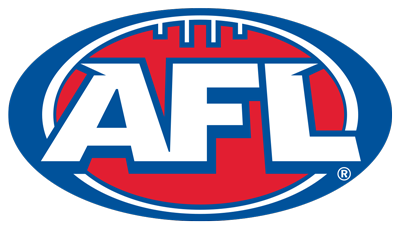How Big is an AFL Field?
Last updated on March 24, 2024 at 07:35 am
Posted on March 24, 2024 at 07:35 am
Discover the intricate world of Australian football - a sport intricately tied to precise field dimensions, strategic markings, and player positioning essential for effective gameplay. From the dimensions of the playing field, goal posts, and interchange areas to the strategic layout of coaches’ boxes, each element plays an essential role in shaping the dynamics of the game. Understanding these details provides valuable insights into the depth and complexity of Australian football, highlighting the meticulous planning and strategic nuances that elevate the sport to new heights. Explore further to uncover the hidden nuances that drive the evolving world of Australian football.
Field Dimensions and Markings
When considering the intricacies of Australian Football World, one cannot overlook the critical aspect of field dimensions and markings that play a pivotal role in shaping the game’s dynamics and strategies.
The dimensions of the playing field, typically an oval shape ranging from 135m to 185m long and 110m to 155m wide, impact player positioning and movement. Markings such as the centre square, centre circle, interchange area, goal square, and goal line serve as strategic points for players to navigate during gameplay.
Understanding the significance of these field dimensions and markings is essential for teams to develop effective game plans and capitalize on positional advantages. In Australian Football, the field is not just a space but a canvas where strategies unfold and victories are shaped.
Playing Surface Specifications
The specifications of the playing surface in Australian Football World dictate the fundamental dimensions and features essential for the game’s strategic execution and player performance.
The centre square dimensions are 50m x 50m, providing a significant area for important ball-ups and restarts.
The centre circle has a 3m diameter, surrounded by an outer circle measuring 10m in diameter, facilitating strategic play around the centre bounce.
The interchange area width is set at 15m, allowing for efficient player substitutions and tactical adjustments during the game.
The goal square, positioned 9m from the goal post and connected by the kick-off line, is a key area for scoring opportunities and defensive maneuvers.
Goal and Behind Posts Requirements
In the domain of Australian Football World, the requirements for goal and behind posts play a pivotal role in shaping the strategic dynamics and scoring opportunities within the game. Goal posts must be a minimum height of 6m, while behind posts should be at least 3m tall. Both the goal and behind posts must have 35mm foam padding, a suitable width, and be positioned 6.4m apart for goal posts and 6.4m from the goal posts for behind posts.
These specific measurements guarantee fair play and accuracy in scoring, contributing to the overall excitement and competitiveness of Australian Football matches. The adherence to these regulations is fundamental in maintaining the integrity and standard of the game.
Coaches Box and Interchange Area
Positioning strategically important for team management and player substitutions, the Coaches Box and Interchange Area in Australian Football serve as essential zones for tactical decisions and in-game adjustments.
Coaches Box Placement: Situated on the side away from the sun and adjacent to the centre wing, allowing coaches a clear view of the game.
Interchange Area Function: Provides a designated space for players to rotate on and off the field, ensuring a smooth shift during matches.
Bench Setup: Each team has two interchange benches within the area, facilitating prompt player changes and communication between coaches and players.
Local and Regional Standards: Bench dimensions are standardized at 4.8m x 1.2m for local and regional competitions, maintaining consistency across different levels of play.
Fencing and Safety Measures
Strategically encompassing the aspects of player safety and boundary demarcation, fencing in Australian Football plays a pivotal role in ensuring a secure playing environment.
The recommended fence height of approximately 900mm with mesh infill or similar material provides a clear delineation between the playing field and spectator areas.
With a 5m run-off distance from the playing field boundary, the fencing not only prevents unauthorized access but also allows for emergency vehicles, players, and officials to enter or exit efficiently.
Adequate gates for access further enhance the safety measures in place.
Conclusion
To sum up, the world of Australian Football is a multifaceted landscape defined by intricate playing field specifications, strategic elements, and inclusive initiatives.
From the dimensions of ovals to the safety measures in place, every aspect of the game contributes to its universal appeal. As the sport continues to evolve and expand, it remains a dynamic and engaging discipline that captivates audiences worldwide.
_________












